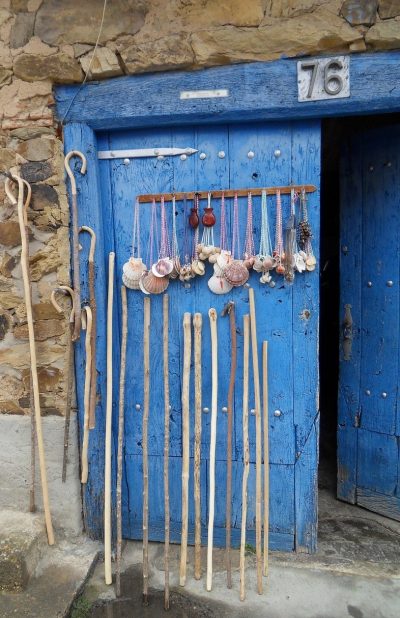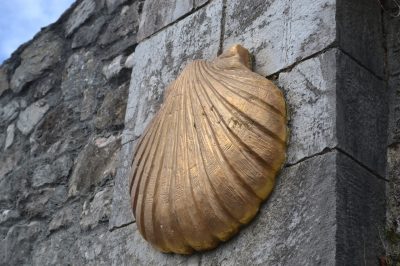Exploring the Camino de Santiago and Unveiling the BeJames Hotel Gift Card
It’s a bucket-list item for avid travelers, adventurers or people in search of purpose and spiritual guidance: a Pilgrimage to Camino de Santiago.
Introduction:
The Camino de Santiago, also known as the Way of St. James, is a UNESCO World Heritage pilgrims trail. As we embark on exploring this remarkable trail, we help you to discover the rich history of Camino de Santiago while exploring the incredible experiences it offers.
In this article, we will dive into the pilgrimage’s historical roots, share fascinating facts, highlight popular routes, discuss means of travel and accommodation, provide budget and duration insights, and introduce useful sites and blogs for you to follow your beloved pilgrim. Additionally, we will shed light on the best gift for avid travelers—the BeJames Hotel Gift Card.
A brief history of Camino de Santiago
The Way of St. James traces its origins back to the 9th century when the remains of Saint James were discovered in Santiago de Compostela, Spain. The city became an important Christian pilgrimage site, and the Camino was established as a route leading to the sacred shrine. Pilgrims from all walks of life undertook the journey, seeking spiritual fulfillment and seeking the blessings associated with the apostle James. Over time, the Camino de Santiago became one of the most significant Christian pilgrimages alongside Jerusalem and Rome.
Facts about the Camino de Santiago
- There are more than 280 different routes that bring you to Santiago de Compostela, starting from and crossing 28 countries.
- The combined length of all trails spans over 80.000 kilometers (49.700 miles).
- The most popular route, the Camino Francés, is 784 kilometers long and starts in Saint-Jean-Pied-de-Port, France, and stretches across northern Spain. On average, the route is divided into 31 stages.
- The pilgrimage can be completed on foot, bicycle, or even on horseback, offering different perspectives and challenges.
- Every year, over 300.000 pilgrims from diverse backgrounds undertake the Camino, forging lasting connections and sharing extraordinary stories.
- The scallop shell is the symbol of the Camino de Santiago and is worn by pilgrims as a sign of their journey.
- The Camino de Santiago was declared the first European Cultural Route by the Council of Europe in 1987, recognizing its historical and cultural significance.
- Pilgrims receive a certificate of completion, the Compostela, upon completing at least the last 100 kilometers (62 miles) of the Camino on foot or horseback.
- The Codex Calixtinus, a 12th century manuscript, provides valuable insights into the early history of the pilgrimage and is being stored in the St. James Cathedral.
- Although often thought, the Way of St. James is not limited to religious individuals but attracts people seeking personal growth, adventure, and cultural exploration.
- The popularity of the Camino de Santiago has experienced a resurgence in recent years, with increased global interest in pilgrimage and self-discovery.
- The official site of the Cathedral in Santiago de Compostela is Oficina del Peregrino; (https://oficinadelperegrino.com)
- The official site of the Camino the Santiago, is Camino de Santiago
Three Popular Routes People Take
The Camino de Santiago offers a multitude of routes, each with its own unique charm and historical significance. Here are the three popular Camino de Santiago routes people undertake:
Camino Francés
- Length: Approximately ±800 kilometers (500 miles)
- Number of Stages: Varies, typically around 30 stages.
The Camino Francés, or the French Way, is the most renowned and well-traveled route on the Camino de Santiago. It starts in Saint-Jean-Pied-de-Port, a picturesque town in the French Pyrenees, and stretches approximately 500 miles (800 kilometers) across northern Spain to Santiago de Compostela. Pilgrims are drawn to this route due to its diverse landscapes, charming villages, and historical sites such as the Gothic cathedral in Burgos and the enchanting hilltop town of O Cebreiro. The Camino Francés offers a vibrant community of fellow pilgrims, comfortable accommodation options, and a wealth of cultural experiences along the way.
Camino Portugués
- Length: Varies depending on the starting point, but roughly 600 kilometers (370 miles) from Lisbon and 250 kilometers (155 miles) from Porto.
- Number of Stages: Varies, typically around 25 stages.
The Camino Portugués, or the Portuguese Way, is another popular route that starts in various locations in Portugal, such as Lisbon or Porto, and winds its way through picturesque countryside and coastal areas before reaching Santiago de Compostela. This route offers a delightful mix of natural beauty, cultural heritage, and culinary delights. Pilgrims are captivated by the charming Portuguese towns of Barcelos, Ponte de Lima, and Valença, as well as the scenic splendor of the Minho River Valley and the coastal views along the way. The Camino Portugués provides a slightly less crowded alternative to the Camino Francés, with a tranquil ambiance that allows for introspection and a deeper connection with nature.
Camino del Norte
- Length: Approximately 850 kilometers (530 miles)
- Number of Stages: Varies, typically around 35 stages.
The Camino del Norte, or the Northern Way, is a coastal route that runs along the northern coast of Spain, offering breathtaking ocean views and a cooler climate. This route starts in the Basque Country or Cantabria, and pilgrims navigate through lush green landscapes, charming fishing villages, and historic cities like Bilbao, Santander, and Gijón. The Camino del Norte is known for its rugged terrain, providing a challenging but rewarding experience for more adventurous pilgrims seeking solitude and natural beauty. The route offers a unique blend of coastal serenity, mountainous landscapes, and rich cultural heritage, making it an attractive choice for those seeking a less-traveled path.
Are you in the proces of planning your Camino, definitely have a look at Camino de Santiago for insights, tips and inspiration!
Want to surprise someone?
Create a personal BeJames hotel gift card right away.
Conclusion
The number one pilgrimage in the world is the Camino the Santiago. A stumbling amount of people embark on this life-changing journey for a variety of reasons, mostly personal.
At BeJames, we have looked into the three most popular routes but there are countless other routes and variations to the ones we have written about.
Are you planning on hiking to Santiago the Compostela, please make sure you are well trained and prepared for this once-in-a-lifetime experience and share your journey with your loved ones. Consider asking for the BeJames Hotel Gift Card to elevate you experience and travel budget by staying in a hotel of your choosing along the route.


